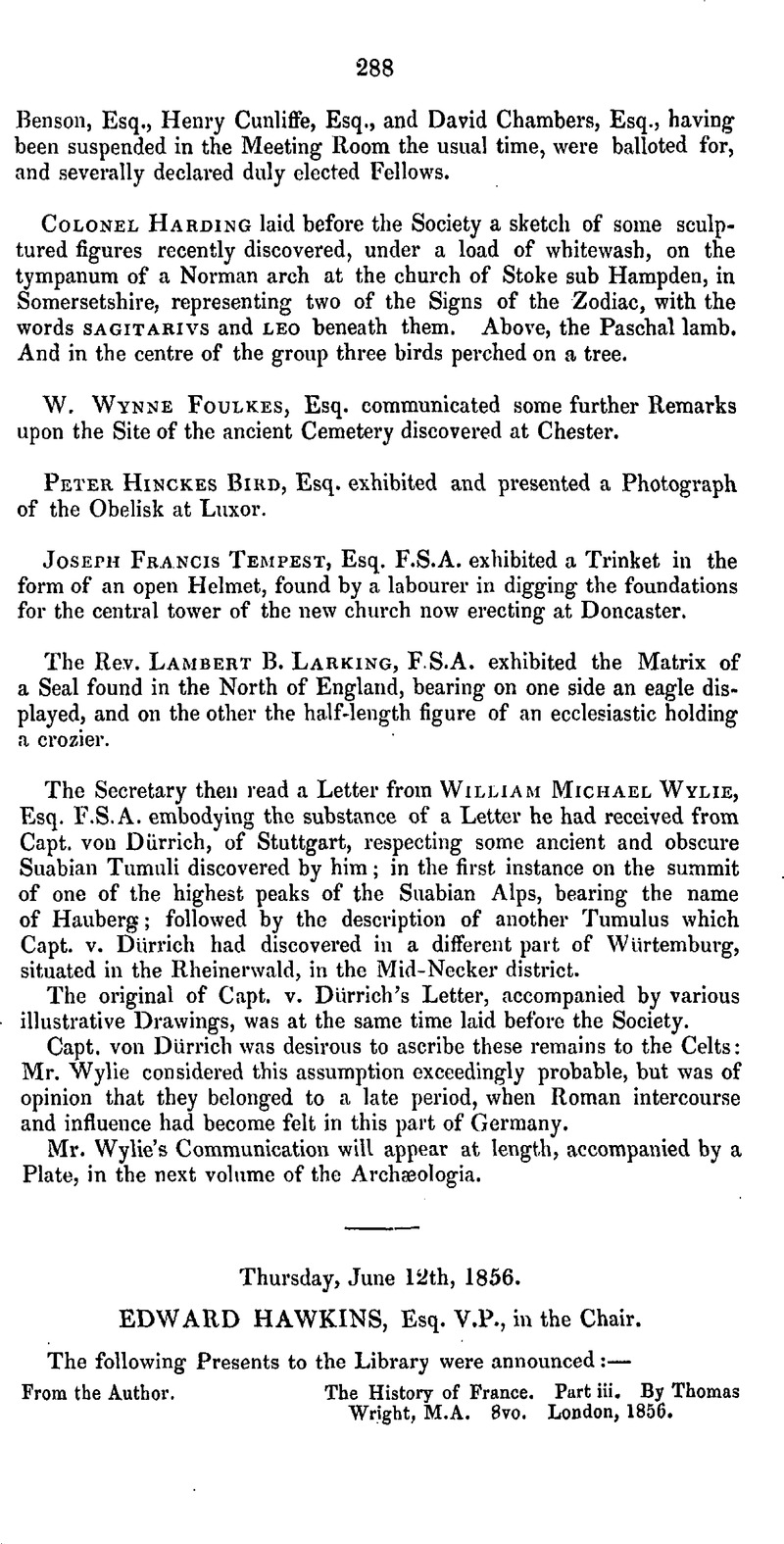No CrossRef data available.
Published online by Cambridge University Press: 10 May 2010

page 290 note * It was formerly the custom to cast bells in the cemetery, or the parvis of the church where they were to be used. They were even cast inside churches, as we ascertained at the Abbey de Valmont, in 1844, where we saw bell-moulds in one of the transepts. The Catholic Liturgy has an especial form of benedictiou for the metal of bells in a state of fusion. It was in the parvis of the Cathedral of Rouen that Jehan of Chartres cast the famous George d'Amboise, August 1, 1501.
page 290 note † “Ecclesiam de Boutelles cum decimis, terris, et hospitibus.” Neustria Pia, p. 165.
page 290 note ‡ “Ecclesiam Sancti Albini de Boutelles.”
page 291 note * A. Brogniart, Traité des Arts Céramiques, ou Poteries, t. ii. p. 99, pi. xxix. fig. 6. Brogniart et Rivereux, Description Méthódique du Musée Céamique de la Manuf. Roy. de Sevres, p. 138, pi. xxix. fig. 6.
page 293 note * De Gerville, Essai sur les Sarcophages dans les Meins. de la Soc. des Antiquaires de l'Ouest, t. ii. p. 182.
page 293 note † M. C. Drouet, Notice sur la Découverte de neuf Tombeaux, ou Sarcophages, en Pierre, 80. Le Mans, 1842.
page 293 note ‡ M. Schayes, Notice sur la Découverte d'un Cimétière Franc au village d'Haulchin, en Hainaut, p. ii, pi. i. fig. 1.
page 293 note § Ex gestis Guill. majoris Andegar. Episc. in Spicilegio Luc. d'Achery, x. p. 251.
page 293 note | Proceedings of the Society of Antiquaries of London, vol. iii. p. 166.
page 294 note * or Hic.
page 294 note † Crux.
page 294 note ‡ doubtful.
page 294 note § M. Vallet de Viriville further consulted M. Natalis de Wailly, who is of the same opinion.